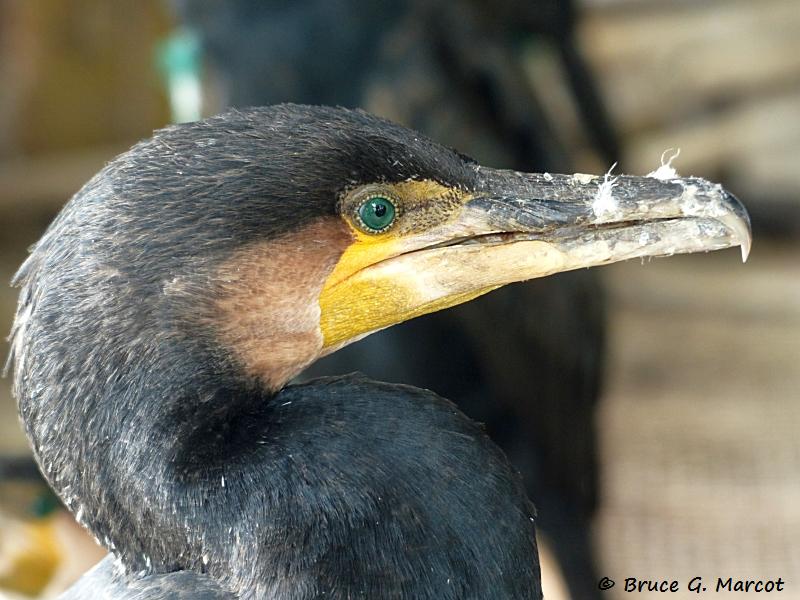
|
|
These Cormorants Can't Fish |
|
|
Click on images for larger versions
|
Great Cormorant (Phalacrocorax
carbo), Family Phalacrocoracidae |
Credit & Copyright: Dr. Bruce G. Marcot
Explanation: This is the Great Cormorant, a widely-distributed species found in many countries and continents. The species is listed as having a "least concern" conservation status by IUCN ... although these particular individuals are captive and caged because of an unusual, high local concern. I'll explain.
Waiting in pens are these captive, trained Great Cormorants,
on the edge of Erhai Lake, southwestern China.
We are on the shores of Erhai Lake in the small village of Shacun, in Yunnan Province, southwest China. Here, Great Cormorants are used by local fishermen to ... well, to fish, by stringing their feet so they can't escape, letting the birds dive from their fishing boats to catch fish, and then the fishermen hauling in their "catch." The fishermen tie off the cormorants' throats so the birds cannot swallow their catch, and the birds are forced to regurgitate the fish.This is an ancient custom here in Yunnan Province, apparently dating back centuries, and a center for modern tourism.
Local sign at Erhai Lake directing tourists to the cormorant fishing site.
But now the practice is threatened -- and all cormorant fishing is currently shut down -- for several reasons.One reason I was told was that the cormorant fishing is causing pollution; at least that is the story being conveyed to the local public. It made little sense to me, so digging deeper, apparently the concern is that the economic benefits from tourism centered on viewing cormorant fishing are not being shared with the local fishermen, who, in their form of a union, have shut down the practice in defiance. This is not to say that Erhai Lake hasn't suffered pollution, but it is from local industries and companies, not the birds.
Empty fishing boats beside the cages of Great Cormorants on Erhai Lake.
Visible here is also an extensive algae bloom, an indicator of pollution -- from local industries, not the birds.
The webbed feet of cormorants give it great propulsion underwater.
Cormorants swim with the power of their feet instead of their wings as penguins do.
The watchful eye of a Great Cormorant of Erhai Lake.
It is unknown how long the birds here will be caged.
Information:
Manzi, M., and O.T. Coomes. 2002. Cormorant fishing in southwestern China: a traditional fishery under siege. Geographical Review 92(4):597-603.
Want, S., L. Zhang, L. Ni, H. Zhao, L. Jiao, S. Yang, L. Guo, and J. Shen. 2015. Ecological degeneration of the Erhai Lake and prevention measures. Earth Science 74:3839, doi:10.1007/s12665-015-4433-4.
Next week's picture:
The Wily Daurian Pika
< Previous ... | Archive |
Index |
Location | Search | About EPOW | ... Next >
|
|
Author & Webmaster: Dr.
Bruce G. Marcot
Disclaimers and Legal
Statements
Original material on Ecology Picture of the Week ©
Bruce G. Marcot
Member Theme of The Plexus